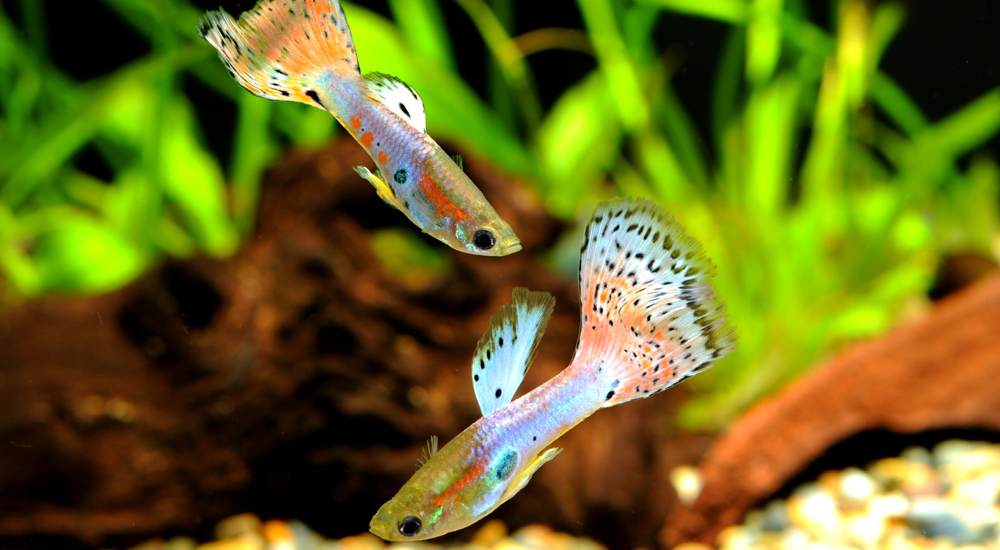No two male guppies are identical. They each have a unique tail, which makes them truly eye-catching in aquariums. They are particularly exciting to watch at breeding time.
Even the courtship display that male guppies (Poecilia reticulata) put on to impress the inconspicuous females is an impressive show: the males fan out their colourful tail fins and dance around until a female shows herself to be a willing partner. As the males will not necessarily accept rejection though, in the wild, the inconspicuous females often choose to stay in areas that are regularly frequented by predators – forcing their admirers to keep their distance as their bright colours make them easy prey.
Impressive miniature fish in aquariums
In aquariums, guppies are therefore always kept in groups, with far more females than males. If a female indicates that she is willing to mate, the male swims up to her and inserts his sperm directly into the female’s copulatory opening via a small, thickened groove in his anal fin. This is known as internal insemination and leads to an exciting characteristic seen in guppies: they are live-bearers. As this name infers, rather than laying eggs, female guppies give birth to live fish.
A fascinating sight for people of all ages
The chance to see this miracle of life fascinates both young and old aquarium owners alike. The fact that it is great fun to watch the little fish grow and change colour is quite probably one of the reasons why the fishkeeping industry has so much to thank guppies for.
These three to five-centimetre fish are the ones who first trigger many people’s interest in aquariums. It also helps that these lively little fish are relatively unshy and extremely easy to look after. However, you should think about what you want to do with any new offspring. Guppies are very industrious when it comes to reproduction – a female can bear up to 100 babies.
Mosquito larvae hunters
In community tanks, the problem often resolves itself. It might sound harsh but other fish sometimes use the young guppies as meals. Anyone who wants to prevent this needs to provide thick vegetation or separate the young fish. When in the wild in their native habitat of Central or South America, the little fish like to hide in the thick vegetation along embankments. This also provides these omnivores with a great hunting ground for mosquito larvae.
Thanks to this useful habit and the low impact they have on their environment, some tropical countries have even intentionally introduced guppies in order to decimate the mosquito population. However, they are also regularly released into water bodies that they are not native to. In many places, guppies are therefore known as introduced species: non-native species that have established themselves in a new environment. This is the case in Germany and Austria, for example, although only in water bodies that are warm enough for the fish, such as thermal springs or water near power plants.

